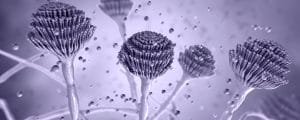- Mycotoxins are a class of toxins generated by specific species of fungi as secondary metabolites.
- Keep in mind that not all types of fungi produce mycotoxins. Some species of fungi can produce more than one mycotoxin, and different species can produce the same mycotoxin. Mycotoxins are not volatile. However, they can adhere to water vapor and travel through the air, acting similarly to gases.
- Once in the air, mycotoxins can cling to various surfaces within your home, including walls, ceilings, HVAC ducts, and carpeting.
- Homes with a history of flooding or multiple water intrusions are more likely to have elevated levels of mycotoxins.
Mycotoxin testing detects the presence of unhealthy mycotoxins. Elevated levels may be caused by mold growth in the home.

Our testing professionals can provide different testing solutions based on your needs. Your physician may request an EMMA test, or it could be helpful for a new home purchase. An airborne mycotoxin test may be applicable for quantifying occupant exposure to mycotoxins in a home or office. Testing surfaces for mycotoxins following remediation work can help determine if the remediation activities were effective.
Mycotoxin Examples (use this instead of possible symptoms)
Aflatoxin: Aflatoxin is produced by several species, including Aspergillus flavus. Poisoning can occur through ingestion, but the most toxic compound, B1, can also permeate through the skin. Aflatoxins are known to be highly carcinogenic substances. In addition to cancer, exposure to aflatoxins has been linked to immune system suppression, stunted growth, and delayed development in children.
Ochratoxin: Ochratoxin is produced by Aspergillus and Penicillium. Ochratoxin A is potentially carcinogenic and weakly mutagenic, possibly causing oxidative DNA damage. It has a strong affinity for the brain, especially the cerebellum, and caution is advised during pregnancy due to its impact on the developing brain.
Tricothecene: Stachybotrys chartarum is a fungus that produces trichothecene, a highly toxic compound. It can enter the body through skin contact, ingestion, or inhalation. Trichothecene is highly irritating and has been allegedly used in biological weapons since WWII.

